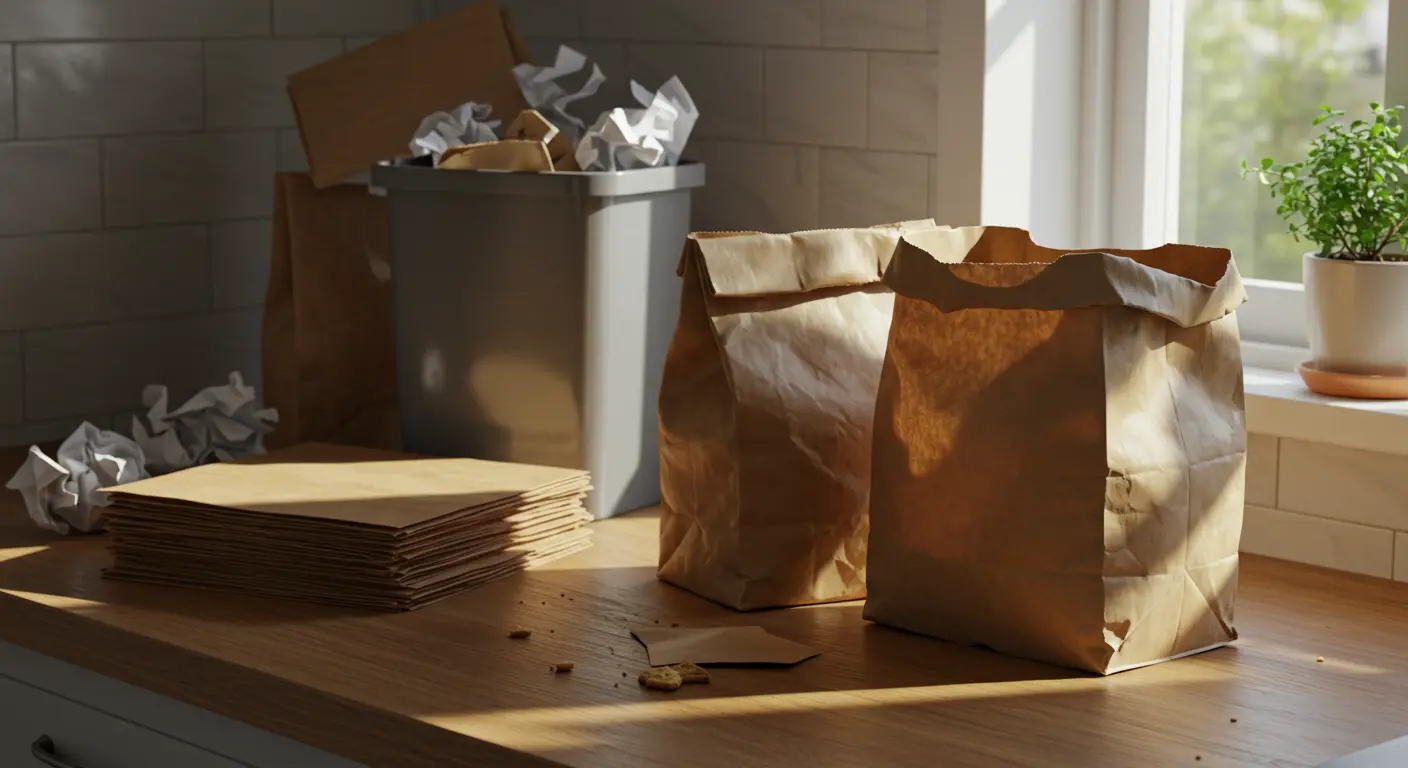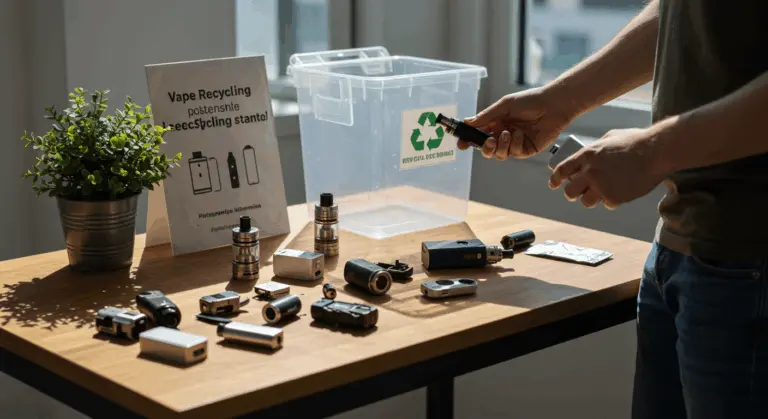Understanding Paper Bags – Are They Recyclable?
Paper bags are indeed recyclable, though their journey to a second life hinges on several critical conditions. This recallability advantage makes them a compelling alternative to plastic counterparts—a distinction that matters to environmentally conscious consumers and businesses.
Cleanliness is paramount for successful paper bag recycling. Even trace amounts of food residue, grease, or moisture can ruin the entire process, potentially sending an entire batch of recyclable materials to the landfill.
The bag’s construction tells the recycling story. Pure paper bags easily transform into new paper products through standard recycling channels. Laminated varieties, however, present a different challenge—their plastic film layers create incompatibility with pulping processes, effectively barring them from conventional paper recycling streams.
Paper handles secured with adhesive pose minimal recycling obstacles, as small glue quantities don’t disrupt the process. Non-paper elements are more problematic. Plastic grips, rope handles, and similar components must be stripped away before the bag can enter recycling channels.
Types of Paper Bags – Which Are Recyclable?
Paper bag recallability isn’t universal—understanding these distinctions helps you make better disposal decisions. Here’s how common varieties compare:
-
Brown Kraft Paper Bags: As the most common type (e.g., grocery bags), these are highly recyclable due to their simple, unbleached, and uncoated fiber composition.
-
White Paper Bags: While generally recyclable, these are bleached, making them a slightly less eco-friendly choice than brown bags.
-
Waxed Paper Bags: Bags with natural wax (e.g., beeswax) are compostable but not recyclable. Those with synthetic wax coatings must be thrown in the trash.
-
Laminated Paper Bags: These bags, which have a plastic film layer, cannot be processed in standard paper recycling systems and contaminate the recycling stream.
-
Bags with Special Features: Non-paper elements like rope handles, metal grommets, or plastic windows must be removed before the paper portion can be recycled.
When in doubt about a particular paper bag’s recallability, check for recycling symbols on the bag or contact your local waste management authority. More eco-friendly designs now prioritize recallability, though these improvements aren’t yet universal across the industry.
The Recycling Process for Paper Bags
Transforming used paper bags into new paper products involves several steps.
-
Sorting: Collection facilities carefully separate bags, removing contaminants like food waste, moisture, and plastic lamination.
-
Pulping: Clean bags undergo shredding and chemical treatment with water, creating a filtered slurry called pulp while extracting impurities such as staples and adhesives.
-
Manufacturing: This pulp transforms through pressing, drying, and rolling into recycled paper—the foundation for cardboard, paper towels, and new bags.
Consumer participation is straightforward: deposit clean, dry paper bags in curbside bins or transport them to recycling centers. Just remember to strip away any non-paper components first.
This simple act of proper paper bag recycling conserves natural resources, diverts waste from landfills, and reduces paper production’s environmental impact.
What Happens to Recycled Paper Bags?
Before consigning paper bags to recycling bins, consider extending their utility through creative reuse. These versatile containers can serve multiple purposes before disposal. Sturdy bags often withstand several shopping expeditions before showing wear. They excel as organizational tools for other recyclables—newspapers, magazines, and junk mail find perfect temporary homes within their walls.
Paper bags have useful kitchen applications. Place unripe avocados or tomatoes inside, fold the top closed, and watch ethylene gas work its ripening magic. Creative minds discover endless possibilities—homemade envelopes, protective book covers, or intricate origami projects. Parents and educators treasure these affordable craft supplies, perfect for puppet theaters and festive decorations.
Gardeners find paper bags quite useful. Shredded bags enrich compost piles or become biodegradable seed-starting containers. They shield ripening tree fruit from pests and function as natural weed barriers between garden rows. When bags finally surrender to wear and tear, proper recycling completes their environmental journey with maximum benefit.
Composting Paper Bags – Is It an Option?
Composting offers an excellent pathway for many uncoated paper bags, transforming them into nutrient-rich soil amendment. This natural process succeeds because paper’s wood fibers readily decompose within compost environments.
Plain brown paper bags thrive in compost systems. Steer clear of laminated or synthetic-wax-coated varieties—their non-biodegradable chemicals disrupt natural decomposition. Natural wax treatments allow composting but extend breakdown timelines.
Success demands preparation: shred bags into small fragments to accelerate decomposition. Balance these carbon-rich “brown” materials with nitrogen-heavy “green” compost ingredients like food scraps, achieving the optimal carbon-to-nitrogen ratio for healthy decomposition.
Moisture management proves crucial—aim for dampness without waterlogging. With proper moisture and oxygen balance, your paper bags will transform into valuable compost within several months.
Biodegradation of Paper Bags – What to Know
Paper bags have a significant environmental advantage: natural biodegradability. While plastic persists for centuries, paper bags contain organic cellulose fibers that microorganisms readily consume in relatively brief timeframes.
Environmental conditions dictate decomposition speed. Under ideal conditions, paper bags decompose within 2–5 months. However, oxygen-poor landfills can extend this timeline to years—highlighting the importance of proper disposal methods.
Plain, uncoated brown paper bags decompose most efficiently. Synthetic coatings and heavy dyes act as decomposition brakes, potentially releasing unwanted chemicals during breakdown. Seek bags bearing “compostable” labels for optimal results.
This biodegradability fits into nature’s carbon cycle—stored carbon returns to soil through natural processes. This stands in stark contrast to petroleum-based plastics, which introduce persistent synthetic materials that ecosystems struggle to process.
Reusing Paper Bags – A Sustainable Choice
Recycling and composting are excellent disposal strategies, but reusing paper bags is the most sustainable option. Reuse maximizes each bag’s lifespan, extracting maximum value from production resources already invested. Each reuse cycle effectively reduces manufacturing demand, conserving trees, water, and energy simultaneously.
Robust grocery bags often endure 5-7 shopping cycles before retirement. Maximize their service life through flat storage in dry locations while avoiding weight overload.
Paper bags reveal surprising versatility in household applications:
-
Liners for dry waste bins
-
Protective wrapping for fragile items
-
A surface for children’s art projects
-
Ripening fruit (e.g., avocados, tomatoes) by trapping ethylene gas
-
Personalized gift wrap or bags
-
Weed barriers or carbon-rich material for garden compost
The most sustainable solution goes beyond paper bag reuse—switching to dedicated reusable bags made from durable materials like cloth or recycled synthetics. These bags withstand hundreds of uses, and many retailers offer incentives for using them, making the switch both environmentally and economically beneficial.
Paper Bags vs Plastic Bags – An Environmental Comparison
Paper bags have clear advantages over plastic alternatives in recycling. Their cellulose fibers endure 5-7 recycling cycles, creating genuinely circular lifecycles that surpass most single-use plastics.
Biodegradability is another advantage of paper. While paper decomposes within months, plastic persists for centuries, fragmenting into harmful microplastics that infiltrate ecosystems.
However, this environmental comparison is complex—paper bag production has significant environmental costs:
-
Resource Intensity: Manufacturing paper bags demands substantially more water and approximately four times the energy required for plastic bag production.
-
Pollution Generation: Production processes create higher air and water pollution levels than plastic manufacturing due to intensive pulping and chemical treatments.
The most effective approach goes beyond the paper-versus-plastic debate. Reducing consumption of all single-use bags by using durable, reusable alternatives minimizes resource consumption and waste generation far more than choosing between disposable options.




